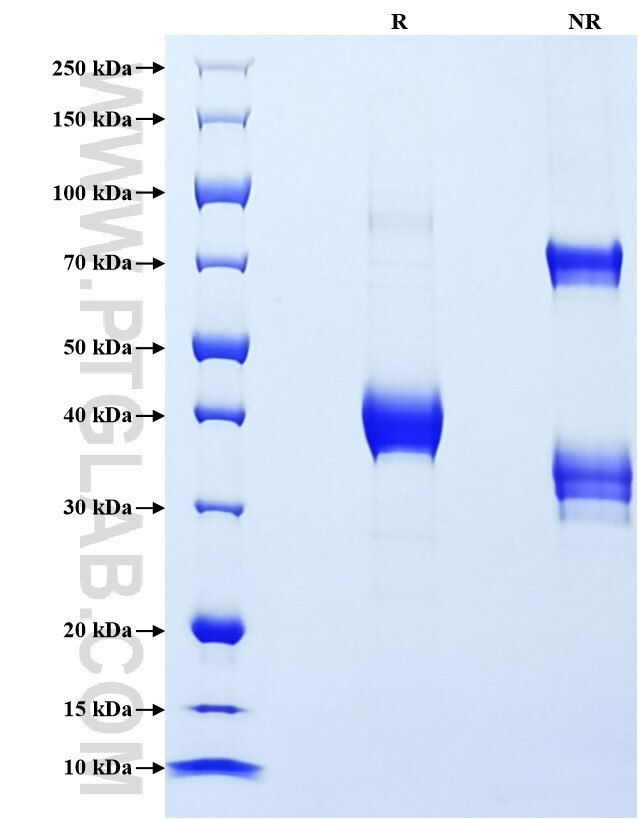Recombinant Mouse CXCL4/PF4 protein (rFc Tag)
Species
Mouse
Purity
>90 %, SDS-PAGE
Tag
rFc Tag
Activity
not tested
Cat no : Eg3345
Validation Data Gallery
Product Information
| Purity | >90 %, SDS-PAGE |
| Endotoxin | <0.1 EU/μg protein, LAL method |
| Activity |
Not tested |
| Expression | HEK293-derived Mouse CXCL4 protein Val30-Ser105 (Accession# Q9Z126) with a rabbit IgG Fc tag at the C-terminus. |
| GeneID | 56744 |
| Accession | Q9Z126 |
| PredictedSize | 34.5 kDa |
| SDS-PAGE | 35-45 kDa, reducing (R) conditions |
| Formulation | Lyophilized from 0.22 μm filtered solution in PBS, pH 7.4. Normally 5% trehalose and 5% mannitol are added as protectants before lyophilization. |
| Reconstitution | Briefly centrifuge the tube before opening. Reconstitute at 0.1-0.5 mg/mL in sterile water. |
| Storage Conditions |
It is recommended that the protein be aliquoted for optimal storage. Avoid repeated freeze-thaw cycles.
|
| Shipping | The product is shipped at ambient temperature. Upon receipt, store it immediately at the recommended temperature. |
Background
CXCL4, alternatively known as platelet factor 4 (PF-4), is the oldest member of the chemokine family. CXCL4 is a chemokine produced by activated platelets and immune cells involved in pathological conditions such as cancer, infections and inflammatory diseases like systemic sclerosis (SSc), rheumatoid arthritis (RA) and psoriatic arthritis (PsA), among others. CXCL4 is present in the α-granules of platelets in amounts that constitute up to 2% platelet protein mass. CXCL4 plays a determinant role in distinct physiological processes such as in hematopoiesis, angiogenesis, coagulation and modulation of immune responses. For instance, CXCL4 can prevent monocyte apoptosis and promote cell survival, induces the production of TNF and reactive oxygen species (ROS) and promotes monocyte differentiation into a unique macrophage-like phenotype.
References:
1. Ruytinx P. etal. (2018). Cytokine.109:65-71. 2. Silva-Cardoso SC. etal. (2019). Mol Immunol. 114:524-534. 3. Dickhout A. etal. (2021). PLoS One. 6(1):e0244736. 4. Domschke G. etal. (2019). Cytokine.122:154141.
